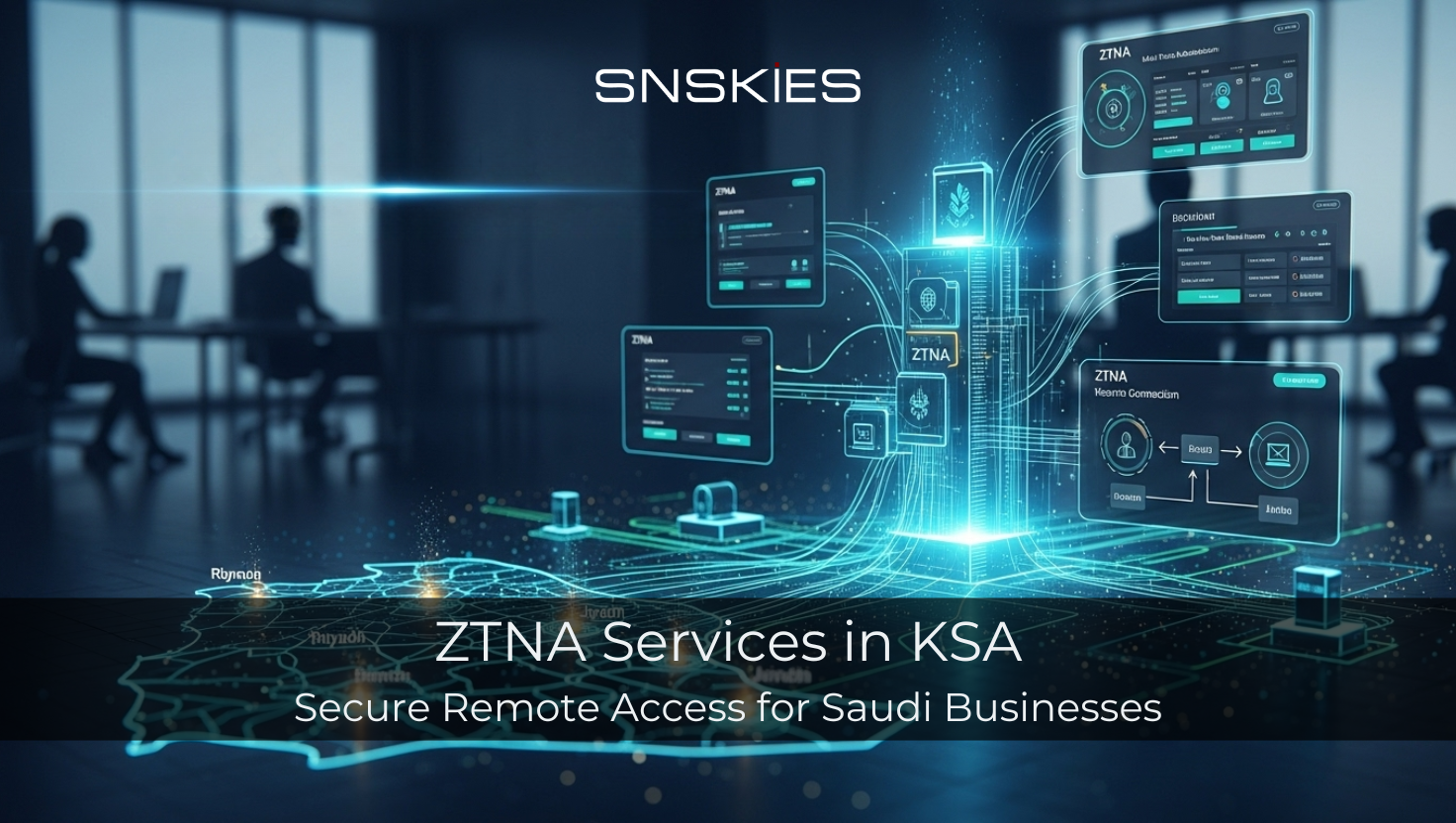- Articles
Zero Trust Network Access (ZTNA): Redefining Network Security
- Articles
Zero Trust Network Access (ZTNA): Redefining Network Security
- Articles
- January 6, 2025
In an era where cyber threats are becoming increasingly sophisticated, relying on traditional network security models is no longer sufficient. The outdated concept of a trusted internal network surrounded by a guarded perimeter has significant flaws. Once an attacker breaches the perimeter, they can move freely within the network, accessing critical assets. To combat this vulnerability, organizations are turning to a more robust security approach: Zero Trust Network Access (ZTNA).
ZTNA operates on a simple yet powerful principle: trust no one, whether inside or outside the network, without verification. By implementing continuous verification and granting the least amount of access necessary, ZTNA dramatically reduces the risk of unauthorized access and lateral movement by attackers.
What Is Zero Trust Network Access (ZTNA)?
Zero Trust Network Access, also known as Software-Defined Perimeter (SDP), is a security framework designed to provide secure remote access to internal applications. Unlike traditional models that assume trust within the network perimeter, ZTNA verifies the identity, security posture, and context of every user and device before granting access.
ZTNA solutions ensure that users and devices can only access the specific resources they need. Security checks are performed continuously, meaning access is dynamically granted or revoked based on changes in user behavior, device posture, or network activity.
Key Benefits of ZTNA
Organizations adopting ZTNA experience several key advantages over traditional perimeter-based security solutions like VPNs:
Enhanced Network Visibility: ZTNA provides a clear view of who is accessing which resources, enabling better monitoring and control.
Stronger Data Protection: By limiting access to only what is necessary, ZTNA minimizes the risk of data breaches and unauthorized access.
Mitigated Risks from Remote Work: With remote work becoming the norm, ZTNA offers a more secure and scalable alternative to VPNs.
Time-Efficient Automation: ZTNA solutions often include automation features that streamline policy enforcement and reduce manual workload.
Core Principles of Zero Trust Security
A zero-trust security model revolves around three core principles:
Ongoing Verification: No user or device is ever fully trusted. Verification is a continuous process, involving multi-factor authentication (MFA), device posture checks, and activity monitoring.
Minimal Access: Access is granted based on the principle of least privilege. Users and devices receive only the permissions necessary to perform their tasks, reducing the potential attack surface.
Assume Breach: Organizations must operate under the assumption that breaches can happen at any time. This mindset drives proactive defense strategies, such as network segmentation and anomaly detection.
ZTNA vs. Firewalls
While both ZTNA and firewalls play a role in securing network access, they differ significantly in approach and capabilities:
Firewalls: Traditional firewalls enforce security at the network perimeter, often relying on static rules and policies.
ZTNA: ZTNA enhances security by addressing key limitations of traditional firewalls, such as management complexity, performance bottlenecks, and lack of dynamic access control.
ZTNA vs. VPN: Which One Is Better?
Virtual Private Networks (VPNs) have long been used to provide secure remote access. However, VPNs were designed for a different era, and they come with several limitations in today’s cloud-centric, remote work environment. Here’s how ZTNA compares:
Dynamic Access: Unlike VPNs, ZTNA continuously verifies access requests and adapts permissions based on the context.
Reduced Attack Surface: ZTNA limits access to specific applications rather than exposing the entire network.
Scalability: ZTNA solutions are better suited for cloud environments and large-scale remote work scenarios.
ZTNA offers a more modern, flexible, and secure alternative to VPNs. By continuously verifying access requests and limiting access scope, ZTNA reduces the risk of lateral movement and unauthorized access.
Conclusion
Zero Trust Network Access represents a significant evolution in network security. By moving beyond perimeter-based defenses and adopting a continuous verification model, ZTNA provides better protection against modern threats. Its granular access control, scalability, and enhanced visibility make it an ideal solution for organizations operating in today’s multi-cloud, remote work environment.
Embracing ZTNA not only improves an organization’s security posture but also simplifies network management, making it a critical component of any modern cybersecurity strategy.
Zero Trust Network Access (ZTNA) FAQ's
ZTNA is a security framework that ensures secure remote access to applications by continuously verifying the identity and context of users and devices before granting access.
Yes, MFA is a core component of ZTNA solutions, providing an additional layer of security during the verification process.
ZTNA provides dynamic, application-specific access instead of granting broad network access like VPNs. It also continuously verifies users and devices, offering better scalability and security.
While ZTNA and firewalls serve different purposes, ZTNA addresses limitations of traditional firewalls by offering dynamic access control and a more proactive security model.
Top ZTNA vendors include SNSKIES , CISCO and FORTINET offering solutions tailored to various business needs.
Recent Post
- All Posts
- Articles
- Blog
- News


